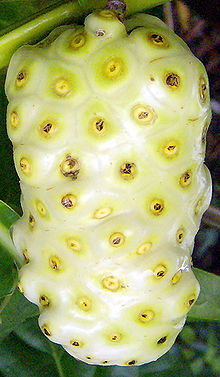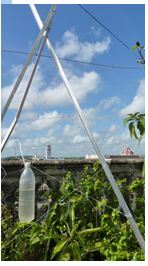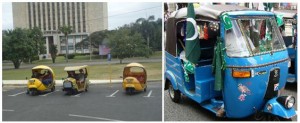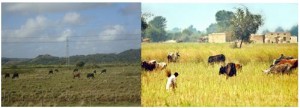If you hadn’t been studying Cuba from all angles for an entire semester, and craved a play-by-play of the Cuban revolution from 1959 to 1999, you might be tempted to pop in Januaries of Victory. Then again, you might be tempted just the same. But keep in mind that this 45-minute documentary given to each of us during our stay in Cuba by Joel’s tourist agency is going to give you the Cuban government’s account of the Cuban revolution—that is, a heavily biased perspective loaded with political propaganda that glorifies the 26th of July movement while demonizing the United States, imperialism, and capitalism.
The structure of the film is reflective of the mission statement of the documentary’s producer, Mundo Latino, which is
“to contribute to the spread the Cuban reality both nationally and internationally through visual communication products that address social, political, cultural, historical, scientific, and environmental issues of our country using a language that is competitive in the audiovisual market .”
In accordance with this mission, the film gives a chronological listing from 1959 to 1999 of important historical events and situations as related to all of these issues. Below I give a brief synopsis of the contents each chapter, especially noting some of the quotes and details that I later use to draw attention to the strategic propaganda employed throughout the documentary.
The Film
Introduction: a brief introduction covers the period between Cuba’s independence from Spain to the victory of the 26th of July movement in 1959. This section introduces Fidel Castro, and makes a point of showing the popular support for the movement.
“1959: Year of Liberation”: a “momentous” agrarian reform document is signed; organizations for national defense are created; ‘Casa de las Americas’, “home of Cuban intellectuals” is founded in Havana; and revolutionary hero Camilo Cienfuegos dies.
“1960: Year of Agrarian Reform”: the naval ship ‘la Coubre’ is sabotaged and Fidel Castro first uses the phrase “Homeland or Death”; U.S. companies are nationalized, “thus fulfilling the Moncade program”; the Federation of Cuban Women is established, “women are always present in the work of the revolution”; the Committees for the Defense of the Revolution are created, which according to Fidel is a “system of collective revolutionary surveillance, surveillance so that everyone knows who lives on their block, what were their links with the tyranny, and what they do, whom they get together with and in what activities they’re involved, because if they think that they will be able to confront the Cuban people it will be a huge letdown for them”; the U.S. implements the economic blockade.
“1961: Year of Education”: the U.S. government breaks diplomatic relations with Cuba; a volunteer teacher is killed by counterrevolutionaries; the Cuban Union of Pioneer Teachers is formed; Cuban soldiers put down the invasion of Playa Girón in 72 hours, “the first military defeat of imperialism in the Americas; the National Literacy Campaign and Cuba soon proclaims itself “a nation free of illiteracy”, and in this way “the Moncada program is fulfilled.”
“1962: Year of Planning”: U.S. pressure causes the Organization of American States (OAS) to expel Cuba; the National Vaccination Campaign begins; the Association of Young Rebels becomes the Union of Young Communists; the U.S. president “demands of the Soviet Union the withdrawal of strategic nuclear weapons” from Cuba and orders a naval blockade, which causes the “October of crisis.”
“1963: Year of Organization”: hurricane Flora devastates Cuba; the Movement of Amateur Artists is founded, and thus the “Moncada program fulfilled.”
“1964: Year of the Economy”: Ché Guevara inaugurates a mechanical plant in Santa Clara; a Cuban sprinter earns a silver medal at the Tokyo Olympics; Ché represents Cuba at the 19th UN general assembly.
“1965: Year of Agriculture”: the Millionaire Movement of Sugar Cane is created; the Lenin Hospital is inaugurated—“Health is a right of the people”—and thus “the Moncada plan is fulfilled”; the Cuban Communist Party is founded; Fidel Castro reads publically Ché Guevara’s farewell letter to Cuba.
“1966: Year of Solidarity”: the first Tri-continental Conference occurs uniting Latin American, Asian, and African nations; the National Defense Council is created; the “Books Within Reach Program” begins and the first national book fair occurs; Ché leaves for Bolivia; Cuba returns “loaded with victories” from the Central American and Caribbean Games in Puerto Rico. “Despite provocations and obstacles placed in their way, the team’s determination was paramount. For the first time, Cuba becomes the lead country in a regional competition.”
“1967: Year of Heroic Vietnam”: “the heroic guerilla,” Ché Guevara, is wounded and taken prisoner in Bolivia, and “the following day he was cowardly assassinated.” At the memorial ceremony, Fidel emphasizes that “our people should be like Ché…”
“1968: Year of the Heroic Guerilla”: Ché’s diary in Bolivia is published and mass distributed for free among the population, so that “the world discovers the truth about what happened in Bolivia.”
“1969: Year of the Decisive Effort”: the Cuban baseball team wins in major international matches; the 10 million ton sugarcane harvest begins; the ‘Schools in the Countryside Plan fulfills “the Martí principle of linking study to work.”
“1970: Year of the 10 Million”: brigades of Cuban doctors assist in Peru after a devastating earthquake; Cubans rally in front of the U.S. interest sector of Havana and demand the liberation of the Cuban fisherman; “Although the 10 million tons [of sugarcane harvest] were not reached, the people celebrate the largest sugar cane harvest in history with a combative spirit. A setback is turned into a victory.”
“1971: Year of Productivity”: African swine fever breaks out among Cuban pigs; Fidel visits Chilean president, Salvador Allende, and is received with an overwhelming welcome.
“1972: Year of Socialist Emulation”: Cuba wins 3 gold medals in boxing at the Olympics in Germany; Fidel visits African nations to strengthen ties; Salvador Allende visits Cuba.
“1973: Year of the 20th Anniversary”: Cuba becomes the country with the lowest infant mortality rate in Latin America; the Young People’s Labor Army is created; military service becomes obligatory.
“1974: Year of the 15th Anniversary”: significant changes implemented into the system of political elections; Cuba hosts the boxing world championships for the first time and Cuba wins 5 titles.
“1975: Year of the First Congress”: the first congress of the Cuban Communist Party is inaugurated and “people gather to support the agreement reached” by the party; the first Internationalist Mission to Angola leaves; the complete works of Jose Martí are published, “another triumph of Cuban literature.”
“1976: Year of the 20th Anniversary of the Granma Landing”: the Cuban population approves the Constitution of the Republic; 73 people killed in sabotage attack backed by the CIA and the U.S. government; Granma memorial inaugurated; Cuba “achieves an unprecedented result in Olympic athletics.”
“1977: Year of Institutionalization”: Alejo Carpentier receives the Cervantes Prize for his literature; 50 young people that form the Antonio Maceo Brigade arrive in Cuba.
“1978: Year of the 11th Festival”: University of Havana celebrates its 250th anniversary; the first ‘Ché Guevara International Pedagogical Group’ leaves for Angola; Cuban women’s volleyball team claims the title as world champions; Cuba hosts the 11th World Festival of Youth and Students.
“1979: Year of the 20th Anniversary of the Victory”: Cuba hosts the 6th summit of Non-Aligned Countries; Cuba attends 34th period of sessions of the UN general assembly; Old Havana declared a national monument.
“1980: Year of the 2nd Congress”: the first Soviet-Cuban space flight occurs; the Cuban Communist Party has its 2nd congress; National Culture Day declared in October.
“1981: Year of the 20th Anniversary of Girón”: at the 5th congress of the Federation of Secondary Education Students, “Cuban youth declare themselves a worthy continuation of its[the revolution’s] tradition of struggle.
“1982: Year of the 24th Anniversary of the Revolution”: the Calros J Finlay Brigade of Medical Students is established; Old Havana is declared a UNESCO World Heritage site.
“1983: Year of the 30th Anniversary of the Attack on the Moncada Garrison”: the Family Doctor Program is established and provides “unprecedented solutions to world community health problems”; a renowned Cuban poet receives the National Literature Prize.
“1984: Year of the 25th Anniversary of the Triumph of the Revolution”: Santiago de Cuba is recognized and celebrated for its struggle in the revolution; “Cuba and Angola issue a joint declaration” and the Cuban International Military Contingent withdraws from Angola; Wilfred Lam Center established to promote third world art and artists.
“1985: Year of the 3rd Congress”: first successful heart transplant in Cuba occurs; the Foundation of the New Latin American Cinema is created.
“1986: Year of the 30th Anniversary of the Granma Landing”: one-of-a-kind hospital opened in Cuba; the fist test-tube baby of Cuba is born.
“1987: 29th Year of the Revolution”: Cuba named a member of the UN Economic and Social Council; the National AIDS Prevention Program begins; Cuba celebrates the 150th anniversary of the railroad.
“1988: 30th Year of the Revolution”: Cuba named a member of the UN Human Rights Commission; center for transplant and regeneration of the nervous system is opened in Havana; UN peace accords signed in Namibia; Cuban medicine makes an important contribution to both national and world optometry.
“1989: 31st Year of the Revolution”: first contingent from Angola returns; Cuban sports “continues on the rise” and both the men and women’s volleyball teams win world championships, “thus showing their domination in this discipline”; Cuban high jumper sets world record.
“1990: 32nd Year of the Revolution”: National Day of Cuban Science celebrated; though “taking care of the disabled in [Cuba] is already a tradition”, a new school for the blind and deaf is opened.
“1991: 33rd Year of the Revolution”: Cuba holds a torchlight march to celebrate José Martí; Havana’s central computer palace inaugurated; the Pan American Games in Cuba show the nation’s “high level of organization and efficiency”; Fidel attends the Ibero-American summit.
“1992: 34th Year of the Revolution”: Fidel visits Spain; Cuba returns to participation in the Olympic games in Barcelona and shows “indisputable dominance” in athletics; a Cuban poet receives the Cervantes prize.
“1993: 35th Year of the Revolution”: Fidel participates in the Ibero-American summit; the 5th anniversary of the Pastors for Peace caravan is celebrated.
“1994: 36th Year of the Revolution”: “Anti-social elements carry out vandalistic actions and the people take to the streets to repel those actions…Fidel goes to the scene of the crime”; the World Health Organization recognizes Cuba for being polio-free; the U.S. intensifies the blockade with new economic measures and Fidel denounces U.S. aggression “designed to strangle the country”; Fidel attends the presidential inauguration of Nelson Mandela.
“1995: Year of the Centennial of the Death of José Martí”: Fidel goes to the World Summit on Social Development; “Cuba Vive” International Festival is inaugurated, and “young people gather from all over the world to show their solidarity with Cuba”; Fidel attends the 50th anniversary of the UN; Fidel visits various Asian countries.
“1996: Year of the Centennial of the Antonio Maceo’s Death in Combat”: “The president of the United States signs the anti-Cuban, extra territorial Helms-Burton law. In response, Cuba approves the Law of Reaffirmation of Dignity and Sovereignty”; Cuba gains access to the internet; Cuban musician receives Picasso medal and diploma of honor from UNESCO; Cuban composer receives the Tomás Luis de Victoria Prize from the King and Queen of Spain; Pope John Paul II receives Fidal at the Vatican; the José Martí memorial is inaugurated.
“1997: Year of the 30th Anniversary of the Death in Combat of Ché and His Companions”: Cuban musician Irakere receives a Grammy Award and the Pongo de Oro Prize; Cuba hosts the 14th World Festival of Youth and Students; the remains of Ché are identified in Bolivia and Cubans receive his remains.
“1998: 40th Anniversary of the Liberation War’s Decisive Battles”: Pope John Paul II visits Cuba; Cuba women win a world volleyball championship; Raul Castro receives a Hero of the Republic Award; Grammy awards bestowed on Cuban musicians of Buena Vista Social Club; the 5th congress of Cuban Writers and Artists occurs; Cuba celebrates the 59th anniversary of the Cuban National Ballet; Cuban painters gain international recognition; Cubans unite in solidarity for hurricane Mitch.
Conclusion: “This is a people that for 40 years have defended the sovereignty of this country in Revolution. To achieve that goal, it has faced the most powerful empire the contemporary world has known. This is not a complete summary of part of our history. This is our history, written day-by-day with determination, enthusiasm and confidence, having José Martí’s thinking as a reason for life, which is the best legacy we can give our children.”
Analysis
It seems hardly necessary to underscore the aspects of propaganda that are abundant and most likely very visible to the (most likely) American reader of this blog. Nevertheless, it is interesting to consider a few of the tactics considered essential to effective propaganda and how they are present in the video.
First, effective propaganda must be SEEN. It should be highly visible for its audience. Considering that the DVD in consideration was freely given to each member of our group from the tourist organization that we had contracted, and given that all tourists in Cuba must affiliate to one of three of the government sponsored tourist organizations, it can be assumed that the DVD is provided to the majority of tourists. In other words, its accessibility for its target audience (tourists) is essentially assured. But the DVD could easily be directed toward a native Cuban audience as well. In fact, there are actually a number of facts and events presented at various moments in the film that are given little or no explanation or background information, and it can only be presumed that a Cuban might possess the necessary supplemental information necessary to fully understand why the event was significant enough to be included in the film.
Next, affective propaganda must be UNDERSTOOD, and for the tourist audience this is facilitated by the translated subtitles, available in English, German, and German, in addition to Spanish. Of course, a Cuban audience—especially given the high average educational attainment of the Cuban citizen—would most likely be able to understand the messages communicated in the video to a further extent than a foreign viewer. Anyone who has not been to Cuba would not know of the incredible extent to which many images (Ché’s face), slogans (“Homeland or Death”), and campaigns (the Cuban 5) are reproduced in both public and private spaces in Cuba. The familiarity a Cuban viewer would have with these symbols and the meanings behind them would most likely allow him or her to understand the many of the references made in the video that remain confusing for the foreigner (who might be wondering ‘what is the Moncada plan?’ or ‘what is the story behind the Cuban fisherman who were detained by the U.S.?).
Finally, propaganda is obviously more effective if it’s REMEMBERED. The best way to ensure that the audience remembers the content of propaganda is through repetition. Looking through the extensive list of highlighted events and situations in the video, the reader probably noted that certain themes were constant and many specific points resurfaced quite often. Achievement in sports, for example, was emphasized throughout the entirety of the video, and was usually presented with a subtle message about Cuban excellence. Another common theme was the antagonistic nature of political, cultural, and economic relations with the U.S., which never presented Cuba as the aggressor. Positive relations with other Latin American, Caribbean, African, Asian, and European nations was a resurgent theme as well, and seemed to reinforce the notion of Cuba as non-controversial in its foreign politics and diplomacy, and thus the behavior of the United States as unwarranted. Other recurrent themes included military might, academic excellence, artistic distinction, and medical aptitude, and the organization of public events and social programs. Symbolic figures like José Martí, Fidel Castro, and Ché Guevara were present in countless scenes, including many of those that emphasized less political moments, like sports victories. Even some phrases were repeated regularly throughout the film: a majority of the chapter titles were of “the anniversary of the victory of the revolution” (or else of another important political event), and multiple programs “fulfilled the Moncada plan”. Lastly, the strategy of repetition was visibly used in the language that described events and situations. Language carrying a negative tone or connotation was almost exclusively reserved for moments that discussed the United States and its synonym, “imperialism.” Even when referring to situations and/or events that have been widely recognized as disastrous or problematic (such as the failed ’10 million ton sugar cane harvest’ or the ineffective economic planning of Ché Guevara while he served as minister of the economy) were portrayed in a positive light. Additionally, some of the ugliest moments of Cuban history during the revolution were completely omitted from the documentary. There is no mention of the Special Period, of the Mariel Boatlift and Balseros exodus, or of international criticisms of oppression or human rights violations. More than anything else—more that the exaggerated language, the excessive repetition, or the arrogance about seemingly trivial achievements—it is these omissions are what immediately point to the documentary’s illegitimacy as a factual source of information on the history of the Cuban revolution.
Marino, Adolfo. Eneros de Victorias: La Revolución Cubana en Imágenes. Mundo Latino. 2000.
http://www.mundolatinotv.cu/modules/news/article.php?sto


























